A recent drone photo shows Jenny Creek (left) flowing into the Klamath River below the Iron Gate Dam after drawdown of the reservoir. | All photos courtesy KRRC.
###
With the largest dam removal project in U.S. history mere months away from its scheduled completion, work has officially begun on restoring the Lower Klamath Basin to conditions not seen for more than a century.
Up to 20 billion seeds comprising 98 different species are now being spread across newly exposed landscapes that have sat mostly underwater for the past 100 years.
In a project update presented via Zoom Thursday morning, Klamath River Renewal Corporation CEO Mark Bransom said the reservoirs have been drained behind the four dams slated for removal: JC Boyle, Copco No. 1, Iron Gate and Copco No. 2, which was already brought down last month.
Map via KRRC.
###
“It’s important to note that these four dams basically bisect the Klamath watershed into a lower and an upper region, and of course [the dams] have blocked the migration of fish and other species up and down the river” since they were installed, Bransom said.
After taking ownership of the four dams from electric power company PacifiCorp in late 2022, the Klamath River Renewal Corporation (KRRC) spent last year preparing for drawdown and dam removal. With initial drawdown complete, it’s now a waiting game for spring runoff and storm flows to flush through the system, returning the Klamath to base flow conditions by the fall.
“And that is the point at which we will be prepared to initiate dam removal,” Bransom said.
KRRC estimates that somewhere between 17 million and 20 million cubic yards of sediment have accumulated behind the dams over the past century, and scientists figure that about a third of that volume — 5 million to 7 million cubic yards — was mobilized during the drawdown. That sediment traveled downstream through the river system, much of it flowing out to the Pacific Ocean, “thereby restoring a really critical function in a healthy river system,” Bransom said.
That sediment volume of 5 million to 7 million cubic yards is roughly equivalent to the amount produced in the lower Klamath annually, Bransom explained, and this surplus was released during the winter because that’s when fisheries agencies and local tribes determined that it would have the fewest biological impacts.
“Most of the [fish] juveniles are up in the tributaries and have not yet started their out-migration to the ocean,” Bransom said.
Drone photo following the initiation of drawdown behind JC Boyle dam. Workers blasted out concrete wall in the culvert under the spillway section to initiate the drawdown, which took about 17 hours.
###
Here are before-and-after photos of Copco No. 2’s removal:
BEFORE:
AFTER:
###
During the project update, Dave Coffman, Northern California and Southern Oregon operations director with Resource Environmental Solutions (RES), offered an update on the work of his employer, which is in charge of water quality and sediment monitoring.
That monitoring work has been ongoing for more than a year in a collaborative effort between RES, the Karuk Tribe and the U.S. Geological Survey, Coffman said.
He also elaborated on the revegetation efforts, which began in 2018 with the collection of 13 million-15 million seeds by hand, primarily through a partnership with the Yurok Tribe. Those seeds were then propagated at nurseries up and down the West Coast, resulting in a total seed source of 17 billion-20 billion.
“We can honestly say now, the restoration truly is underway,” Coffman said. “We’ve had revegetation crews out on reservoir sediments since the 15th of January.”
The 98 different species being replanted include lupine, which has the added benefit of fixing nitrogen.
###
While the majority of the planting and seeding is being done by hand, crews will soon continue the work via helicopter, laying down seed in more remote and muddy areas that are inaccessible on foot. Coffman said this revegetation should be wrapped up by mid-March.
Here’s a map of the restoration plan for the Copco Lake area:
###
In the coming months, as spring runoff passes through the system, crews will work on decommissioning the now-defunct powerhouses, among other tasks.
“Once we get to the spring and see the river back down to base flow condition, we’ll get out and initiate the removal of JC Boyle, Iron Gate and Copco No. 1 more or less simultaneously,” Bransom said. Crews aim to have dam removal completed and the river restored to its free-flowing condition by September or early October, if not sooner.
“The goal is to be entirely out of the river in time for the fall [salmon] run and to have reopened some of the upper tributaries and main stem for fish that may be coming through,” he said.
A steel pipe extended from a new tunnel at the base of Copco No. 1 was used for drawdown.
PREVIOUSLY
- Ground Has Been Broken on Klamath River Restoration, the World’s Largest-Ever Dam-Removal Project
- (PHOTOS) Removal of Copco No. 2 Dam Complete, Restoring Klamath River Flows to Ward’s Canyon for the First Time in 98 Years
- (VIDEO/PHOTOS) Iron Gate Reservoir Drawdown Has Begun as Dam Removal on the Klamath Continues
- (VIDEO) BOOM! Copco 1 Dam Blast Sends Middle Klamath River Flowing Freely For the First Time in a Century
- Interior Department Reaches Landmark Agreement with Klamath Basin Tribes, Project Irrigators to Collaborate on Ecosystem Restoration and Water Reliability
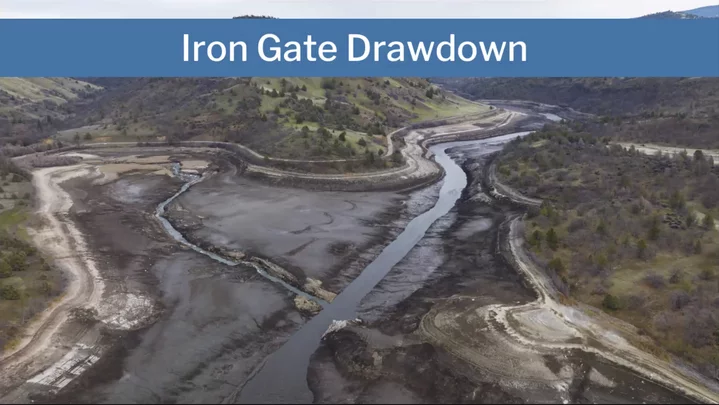
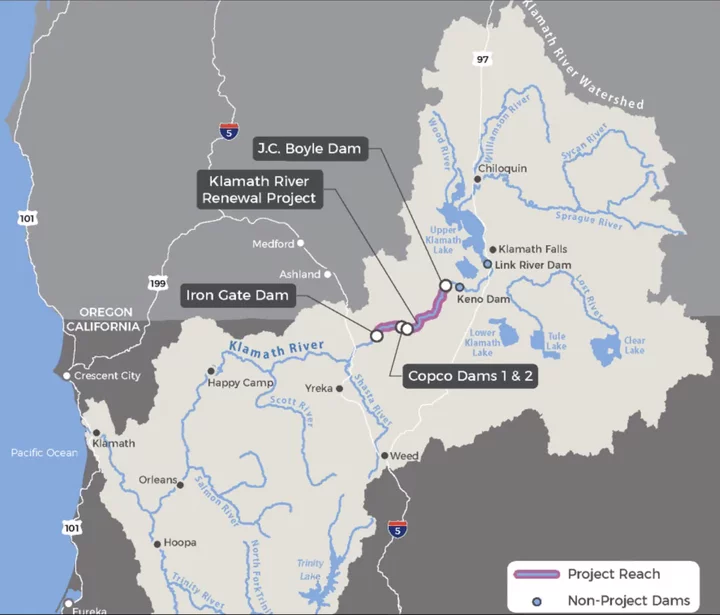
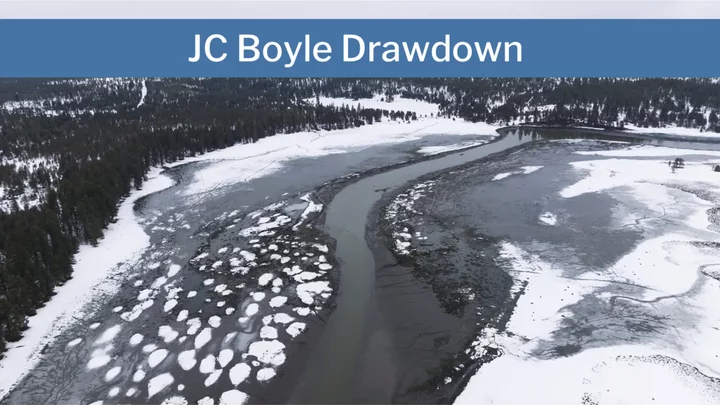
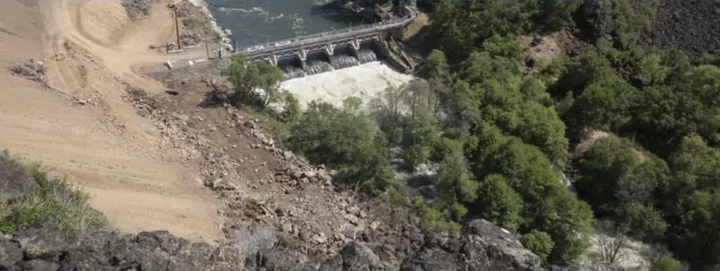


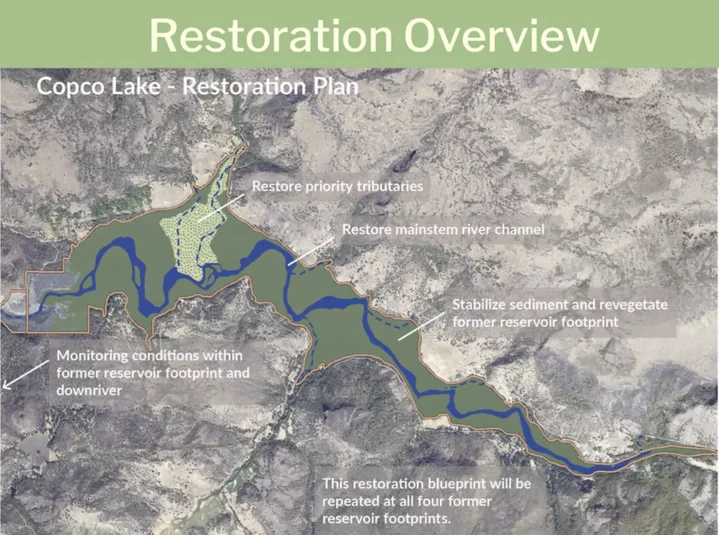
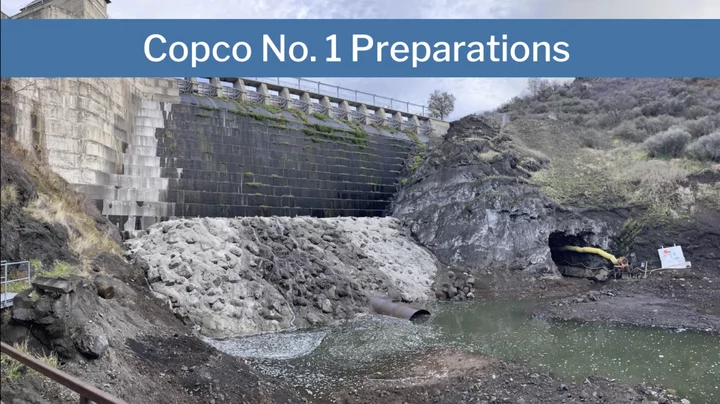
CLICK TO MANAGE